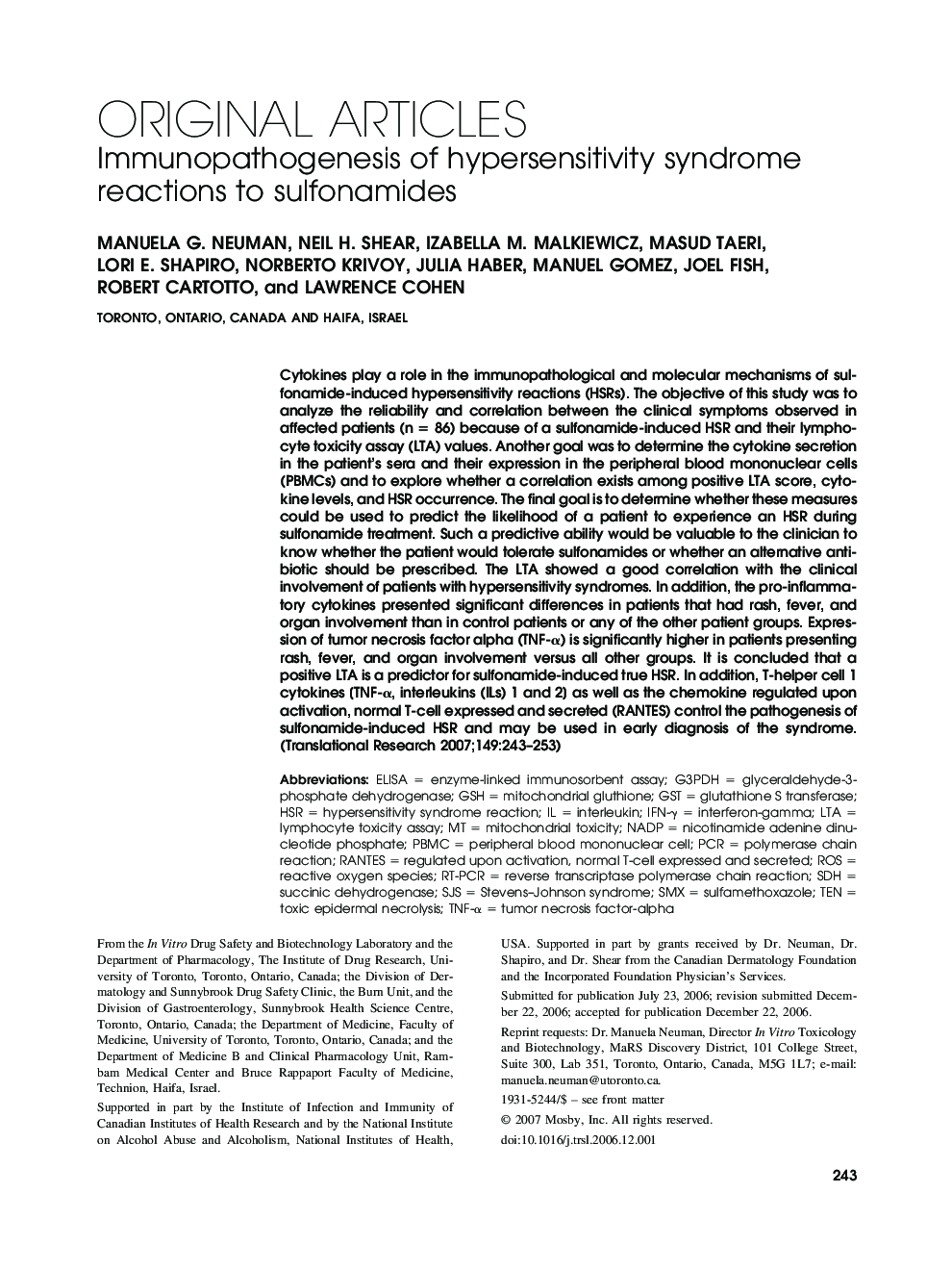| Article ID | Journal | Published Year | Pages | File Type |
|---|---|---|---|---|
| 3841476 | Translational Research | 2007 | 11 Pages |
Cytokines play a role in the immunopathological and molecular mechanisms of sulfonamide-induced hypersensitivity reactions (HSRs). The objective of this study was to analyze the reliability and correlation between the clinical symptoms observed in affected patients (n = 86) because of a sulfonamide-induced HSR and their lymphocyte toxicity assay (LTA) values. Another goal was to determine the cytokine secretion in the patient’s sera and their expression in the peripheral blood mononuclear cells (PBMCs) and to explore whether a correlation exists among positive LTA score, cytokine levels, and HSR occurrence. The final goal is to determine whether these measures could be used to predict the likelihood of a patient to experience an HSR during sulfonamide treatment. Such a predictive ability would be valuable to the clinician to know whether the patient would tolerate sulfonamides or whether an alternative antibiotic should be prescribed. The LTA showed a good correlation with the clinical involvement of patients with hypersensitivity syndromes. In addition, the pro-inflammatory cytokines presented significant differences in patients that had rash, fever, and organ involvement than in control patients or any of the other patient groups. Expression of tumor necrosis factor alpha (TNF-α) is significantly higher in patients presenting rash, fever, and organ involvement versus all other groups. It is concluded that a positive LTA is a predictor for sulfonamide-induced true HSR. In addition, T-helper cell 1 cytokines [TNF-α, interleukins (ILs) 1 and 2] as well as the chemokine regulated upon activation, normal T-cell expressed and secreted (RANTES) control the pathogenesis of sulfonamide-induced HSR and may be used in early diagnosis of the syndrome.
